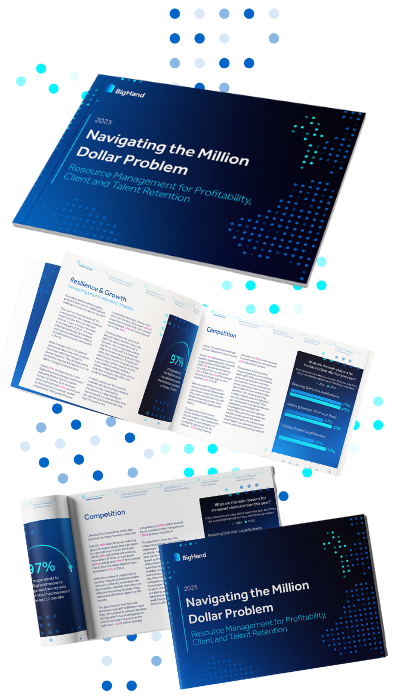The Numbers Don’t Lie
Having data from such a broad range of firms in the market provides unique insights into what is happening across the legal landscape. When looking at changes across the talent vertical specifically, there can often be some surprising statistics. One that we weren’t expecting, however, was the exodus of associates - not from law firms to in-house roles, which is a challenge in itself for law firms - but from the legal industry altogether! This leapt up from 9% in 2024 to 16% in 2025. This is one of the strongest indicators that the industry is not doing enough, or changing quickly enough, to encourage associates that the legal industry is rewarding and attractive enough for their long-term careers. The implications for the future of the profession are huge.
The financial impact of an associate moving on from a firm, for any reason, is substantial. Each associate departure can cost over $1 million in lost revenue, recruitment costs, and training fees. To compound the talent issue, 97% of law firms report increased client attrition, with nearly half (44%) claiming that high associate turnover is impacting client satisfaction and matter delivery.
Law firms are facing a significant challenge that requires urgent, systemic change.
Why Associates Are Really Leaving
Associate expectations have been changing over recent years - and continue to do so. Historically, throwing money at the issue generally resolved attrition issues. This is no longer the case. As the global workforce, alongside ways of working, has changed, the legal sector is now also being impacted and needs to adapt to continue attracting and retaining staff to the profession more broadly, which is even more acute when looking at individual law firm retention.
Burnout and Unsustainable Demands
According to Bloomberg Law’s Attorney Workload and Hours Survey, the average hours worked per week was 48 hours - already well beyond your standard 40-hour week. In reality, this number will likely be in the 60s, perhaps even beyond that. When a fifth of BigHand's respondents cite work-life balance as a primary reason for talent attrition, it's clear that associate priorities extend beyond basic remuneration. New entrants to the profession generally come in with the knowledge that they are not going into a 9-5 role, and it is often the fact, or perception, that others - in the same role - are working far fewer hours than themselves, which creates an immediate feeling of unfairness, linked to the point below.
Inconsistent and Inequitable Resourcing
At the other end of the spectrum are lawyers who might feel as though they're being overlooked. For too many firms, work is allocated subjectively: 37% base staffing on preference rather than skills or capacity. This isn’t an act of malice, but rather a question of visibility. Less than half (49%) of firms have full data on associate utilization, and just 34% use these data to guide work assignments. To prevent your talent from feeling invisible, firm leaders must ensure they have a comprehensive understanding of workloads, skillsets, and development objectives.
Lack of Career Development
The appetite for career-enhancing and diverse work opportunities is prevalent. If unsatiated, associates will likely feel that their career development is being restricted. In fact, only 31% of firms hold regular career development conversations. There's work to be done, particularly when 18% of respondents cite a lack of professional development as a key reason for talent attrition.
The Downstream Impact on Profitability
Inefficient allocation practices are costly beyond the million-dollar attrition problem.
BigHand research indicates that 30% of law firm leaders believe partners spend 3-4 hours weekly on internal administrative tasks that should be handled by dedicated support staff. As a firm leader, when you consider that partners are likely to be your most expensive resource, this should create an immediate need for change. Consider this (hypothetical) model:
Now multiply that across every partner at your firm. How long can you afford not to act?
How Can You Buck the Trend?
Despite the challenges raised above, there are some simple interventions that can be put in place. For example, only 22% of firms leverage technology for resource management. So, if you’re part of the remaining 78%, you have a golden opportunity to leapfrog the competition by pushing ahead with a simple but hugely impactful change.
I’ve been proud to see firsthand how impactful tech-driven resource management can be. Discussing the positive transformation enabled by BigHand Resource Management, one HR leader at a Global 200 law firm said:
“Our data analysis revealed significant improvements in utilization curves. Initially, utilization rates ranged from 38% to 140%. However, our most recent 12-month rolling data showed a more balanced distribution between 70% and 100%. This demonstrates overall improvement across all team members while eliminating extremely long working hours.”
That translates to more fairly treated associates, healthily working toward maximum capacity, and consistently delivering strong financial performance for the firm.








